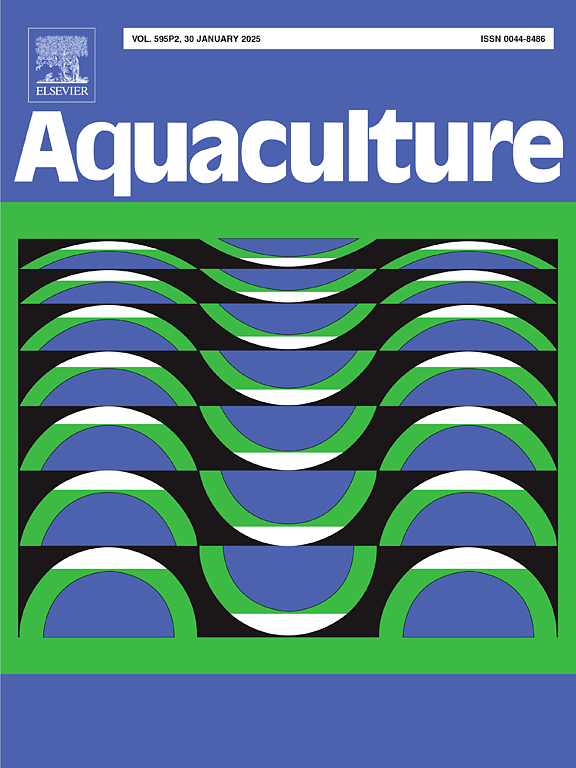Evaluating metabolic rate and specific dynamic action in recirculating aquaculture systems: Influence of stocking density and feeding level in barramundi (Lates calcarifer)
IF 3.9
1区 农林科学
Q1 FISHERIES
引用次数: 0
Abstract
Bioenergetic modelling plays a crucial role in aquaculture, optimizing nutrition, growth prediction, husbandry, and genetic management. The estimation of animal metabolic rate (MR), traditionally conducted in closed respirometric chambers, is a fundamental aspect of these models. This study presents a novel method for directly measuring fish MR, routine metabolic rate (RMR), postprandial peak metabolic rate (PMR), and specific dynamic action (SDA) parameters including SDA coefficient (CSDA) within a recirculating aquaculture system (RAS). Additionally, the study evaluates the effects of fish size, stocking density, and feeding levels on these metabolic metrics. Using 3510 barramundi (Lates calcarifer, 51.2 g) housed in 27 RAS tanks (1 m3, 30.0 °C seawater), dissolved oxygen levels every 10 min for 56 days to model metabolic parameters. Fish MR ranged from 14.5 to 112.8 mg O2 fish−1 h−1, following a daily sinusoidal pattern. PMR fit a power model (PMR = 2.18 × body weight [BW]0.71, R2 = 0.70, n = 810), while RMR followed an exponential model (RMR = 6.31 × exp. (0.01 × BW), R2 = 0.87, n = 148). SDA parameters remained largely unaffected by stocking density or feeding rate (P > 0.05), with time-to-peak = 8.8–10.7 h, total SDA duration = 22.1–22.6 h, SDA factual scope = 2.0–2.9, and CSDA = 14.8–16.4 %. Although this RAS-based methodology does not match the precision of closed-chamber respirometry, the results closely align with previous findings. This approach therefore provides a scalable tool for phenotyping metabolic variations in commercial aquaculture.
求助全文
约1分钟内获得全文
求助全文
来源期刊

Aquaculture
农林科学-海洋与淡水生物学
CiteScore
8.60
自引率
17.80%
发文量
1246
审稿时长
56 days
期刊介绍:
Aquaculture is an international journal for the exploration, improvement and management of all freshwater and marine food resources. It publishes novel and innovative research of world-wide interest on farming of aquatic organisms, which includes finfish, mollusks, crustaceans and aquatic plants for human consumption. Research on ornamentals is not a focus of the Journal. Aquaculture only publishes papers with a clear relevance to improving aquaculture practices or a potential application.
 求助内容:
求助内容: 应助结果提醒方式:
应助结果提醒方式:


